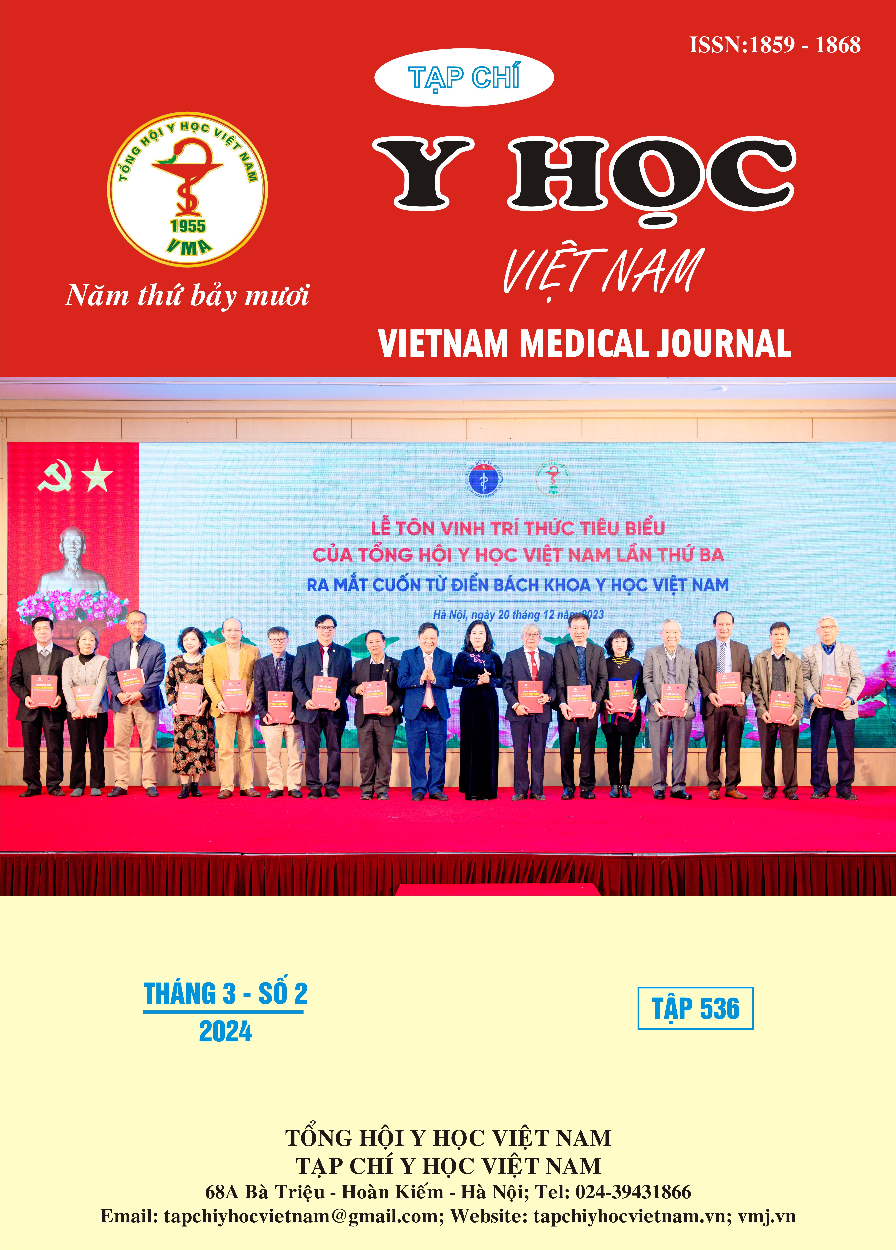CLINICAL AND PARACLINICAL CHARACTERISTICS OF PATIENTS WITH KAWASAKI DISEASE & RELATED FACTORS TO CORONARY ARTERY DAMAGE AT NGHE AN OBSTETICS AND PEDIATRIC HOSPITAL
Main Article Content
Abstract
Objective: To describe the clinical and paraclinical characteristics of patients with Kawasaki disease and investigate some factors related to coronary artery damage. Research subjects and methods: The cross-sectional study of 62 patients with a confirmed diagnosis of Kawasaki treated at Nghe An Obstetrics and Pediatrics Hospital from January 2019 to July 2021. Results: The most common symptoms are continuous fever for ≥ 5 days, erythema, oral cavity changes (all seen in 100% of cases). Almost cases are of typical disease (93.5%). Most patients have increased white blood cell count (67.7%), increased erythrocyte sedimentation rate (75%), and increased CRP (80%). Coronary artery damage accounts for 38.7%, of which damage to the left coronary artery is 50%, right coronary artery is 33.3% and both coronary arteries are 16.7%. Multivariate analysis results show that CRP and albumin concentrations are independent factors predicting the risk of coronary artery damage. Conclusion: The most common clinical symptoms are fever lasting more than 5 days, skin erythema, and oral cavity changes. Common paraclinical symptoms are erythrocyte sedimentation, increased CRP and white blood cells, and decreased albumin. The prevalence of coronary artery lesions on echocardiography is relatively high (38.7%). CRP and Albumin levels are independent factors predicting the risk of coronary artery damage.
Article Details
References
2. Ryusuke Ae, Nobuko Makino, Masanari Kuwabara, et al (2022). Incidence of Kawasaki Disease Before and After the COVID-19 Pandemic in Japan Results of the 26th Nationwide Survey, 2019 to 2020. JAMA Pediatrics;176(12):1217-1224.
3. Gi Beom Kim, Lucy Youngmin Eun, Ji Whan Han, et al (2020). Epidemiology of Kawasaki Disease in South Korea: A Nationwide Survey 2015-2017. Pediatr Infect Dis J. 39(11):1012-1016.
4. Phan Hùng Việt, Nguyễn Ngọc Minh Châu (2018). Nghiên cứu đặc điểm lâm sàng, cận lâm sàng và kết quả điều trị của bệnh Kawasaki ở trẻ em tại Trung tâm Nhi khoa Bệnh viện Trung ương Huế. Tạp chí Y dược học Huế; 7 (1), 30.
5. Đặng Thị Hải Vân, Vũ Mạnh Tuân, Lê Trọng Tú (2020). Đặc điểm tổn thương động mạch vành trên siêu âm tim của bệnh nhân Kawasaki. Tạp chí Nghiên cứu y học, 131 (7), 120-126.
6. Japanese circulation society joint research group (2005). Guidelines for diagnosis and management of cardiovascular sequelae in Kawasaki disease. Pediatr Int; 47(6), 711 – 32.
7. Brian W McCrindle , Anne H Rowley , Jane W. Newburger, et al (2017). Diagnosis, Treatment, and Long-TermManagement of Kawasaki Disease: A Scientific Statement for Health Professionals From the American Heart Association; Circulation,135:e927–e999.
8. Nguyễn Thị Mai Lan và Vũ Minh Phúc (2009). Khảo sát tổn thương tim mạch trên bệnh nhân Kawasaki giai đoạn cấp. Tạp chí y học TP. Hồ Chí Minh, 13, 128 - 133.


